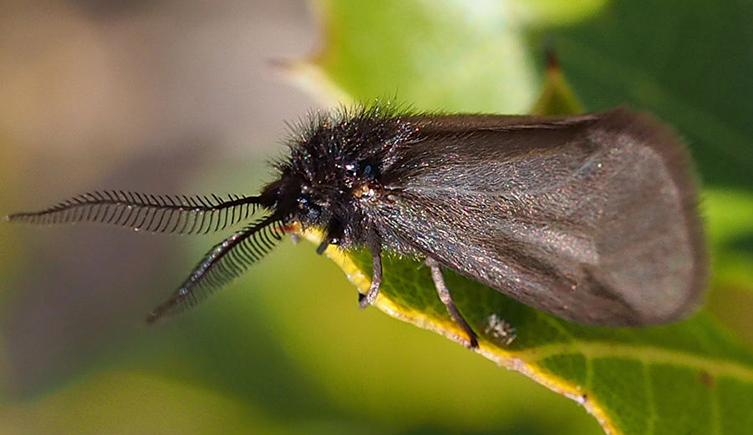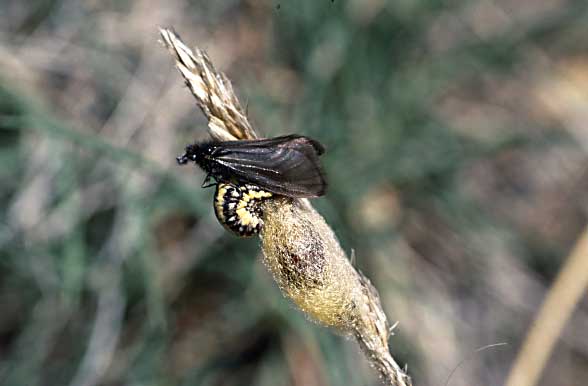By Reba Kocher
Listen to this blog post here: Heterogynis_penella.mp3
You know how much I love moths, and this Lepidoptera month has been full of them. Well, I am coming to you again with another moth. The Heterogynis penella is a moth that doesn’t get a super cool common name. They like hot, dry forests, so they tend to live in the Mediterranean and in the Southern Alps. They can specifically be seen in Alsace (a historical region in eastern France, on the west bank of the upper Rhine next to Germany and Switzerland). The fly in May through July and sometimes into early August. Male larvae spin a white cocoon and the pupa is made within and is black. Female pupa is yellow with grey stripes at the front and bright brown at the ends. The males emerge in two weeks, while it only takes the females five days to develop. Males are half the size of the females and have a wingspan of 24mm-27mm. As adults, they are cute, black, and fuzzy.

An adult male Heterogynis penella moth. Cute, isn't he?
The reason that the description has been so gendered so far is because the female moths develop so differently. As adults, they do not have wings or legs. This means that once they emerge from their cocoon, they must stay very close to their cocoon. In fact, once they mate with the males, they return to their cocoon and hatch their larvae. Once the larvae hatches, something really cool and a little unique happens. Stop reading if you are squeamish! The little, freshly hatched caterpillar babies eat their mother! The hatchlings get a big, fatty meal before leaving and entering the world alone. Isn’t nature beautiful?

An adult female and an adult male Heterogynis penella moth mating.
